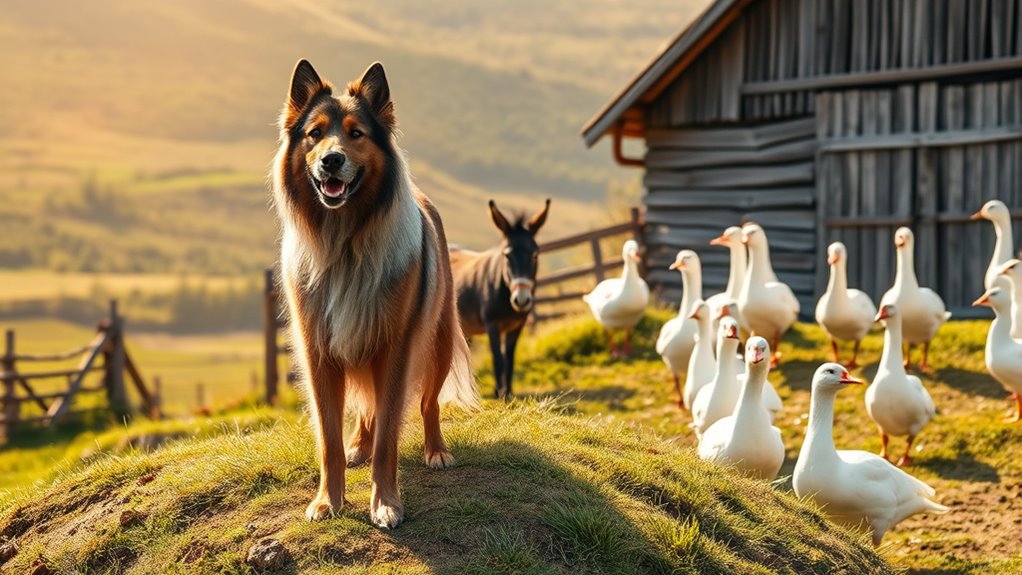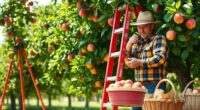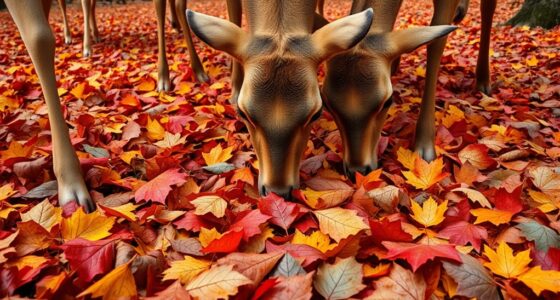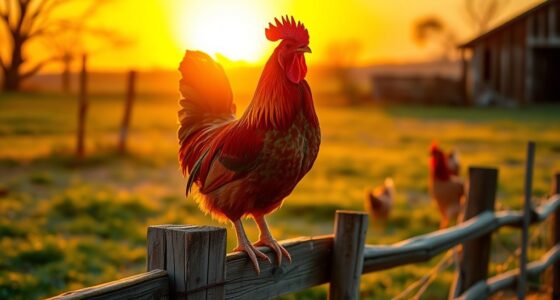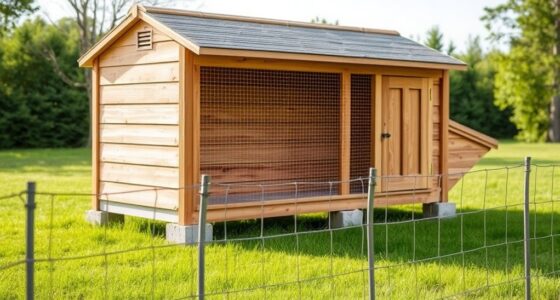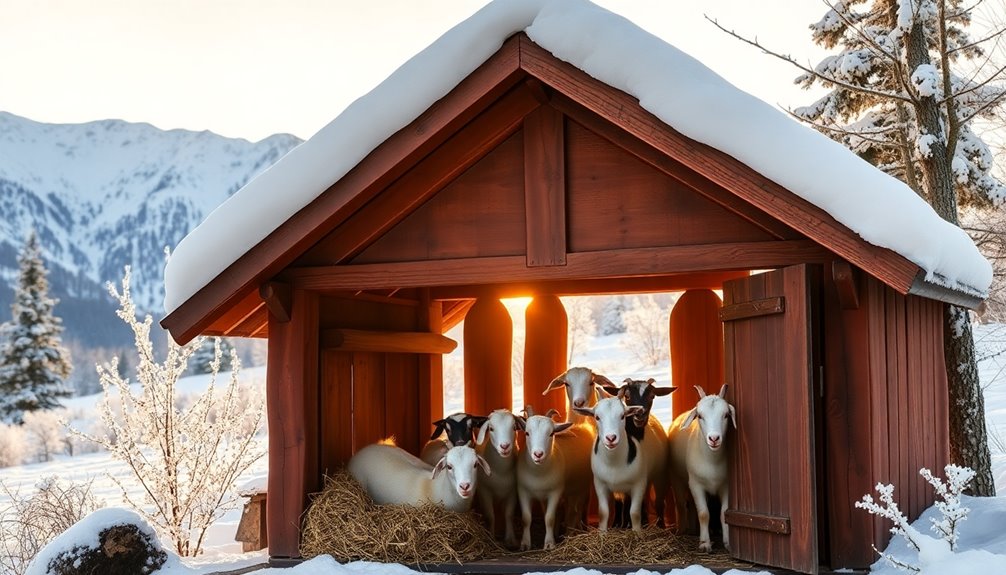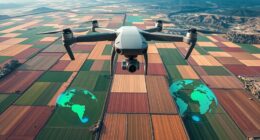Livestock guardian animals like dogs, donkeys, and geese naturally protect your farm by using their instincts, training, and historical roles. Dogs bond with livestock and have strong guarding instincts, while donkeys are territorial and aggressive toward threats. Geese are alert and respond quickly to danger. These animals offer a natural, cost-effective way to keep predators at bay. If you want to explore how these guardians work and how to train them effectively, you’ll find useful insights ahead.
Key Takeaways
- Livestock guardian animals include dogs, donkeys, and geese, each with unique natural instincts that protect against predators.
- Proper training and socialization from an early age enhance their effectiveness in guarding livestock.
- Dogs like Great Pyrenees and Anatolian Shepherds are bred for strong guarding instincts and bond closely with livestock.
- Donkeys are naturally territorial and aggressive toward predators, offering a low-maintenance protective role.
- Geese are highly alert, respond instinctively to threats, and have been used historically as effective farm guards.
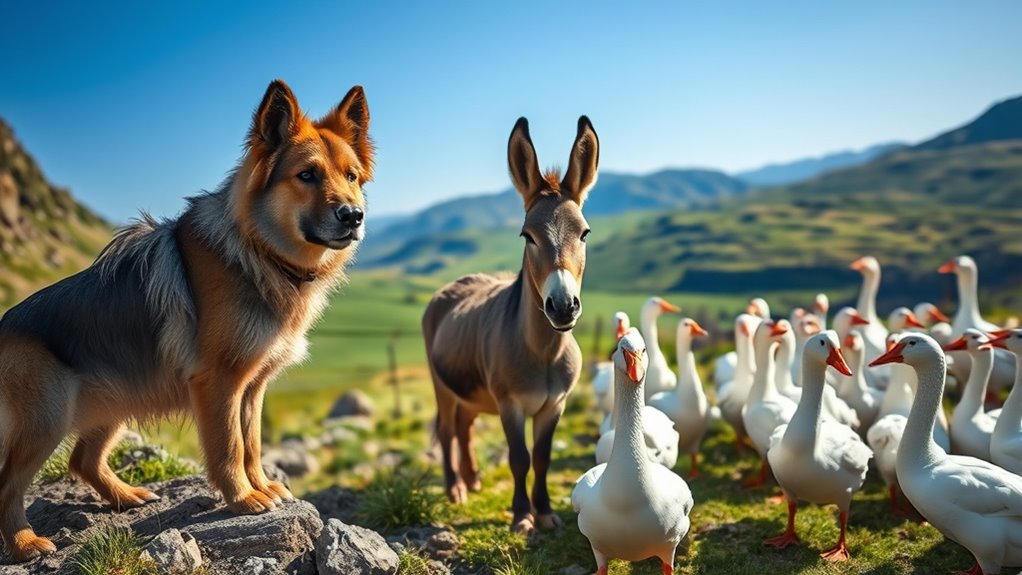
Have you ever wondered how farmers protect their livestock from predators? One of the most effective ways is by using livestock guardian animals, which have been around for centuries and serve as natural protectors. These animals, including dogs, donkeys, and geese, rely on a combination of instincts, training methods, and historical uses to keep predators at bay. Understanding how they work and their background can help you decide which guardian is best for your farm.
Livestock guardian animals have protected farms for centuries using instincts, training, and history.
Training methods for livestock guardian animals are essential because they shape the animal’s behavior and their ability to protect. For dogs, training often starts early, socializing them with the livestock they’ll guard and exposing them to different situations. Many breeds, like Great Pyrenees or Anatolian Shepherds, are raised with the animals they’ll protect, fostering a strong bond and natural guarding instincts. Positive reinforcement and consistent routines are key to ensuring these dogs understand their role. Donkeys, on the other hand, are naturally territorial and aggressive toward predators. Training them involves teaching them to be comfortable around livestock and ensuring they recognize threats. Geese are less trainable but instinctively alert and aggressive when they perceive danger; their training mainly involves acclimating them to the farm environment so they respond confidently to threats. Additionally, their fiber content and instinctive behaviors contribute to their effectiveness as guardians. Moreover, understanding the behavioral instincts of these animals enhances their effectiveness and your ability to manage them properly. Proper socialization and understanding of their natural guarding behaviors can significantly improve their protective responses. Recognizing how their innate traits influence their protective actions can help optimize their effectiveness on your farm. Interestingly, the historical uses of these animals highlight their longstanding role in livestock protection across different cultures and eras.
Historically, livestock guardian animals have been used for thousands of years across different cultures. In ancient Greece and Rome, large dogs like Molossians and Mastiffs helped protect flocks from wolves and other predators. Similarly, in the Middle East and Central Asia, breeds like the Anatolian Shepherd and Kangal have been used for centuries, valued for their independence and fierce guarding. Donkeys have also played a long-standing role in protecting livestock, especially in parts of Africa and the Middle East, where their natural aggression towards predators like dogs and jackals has proven invaluable. Geese, popular in European farms, have been used for centuries as a cost-effective, low-maintenance guard against foxes and other small predators. These historical uses demonstrate that guardian animals aren’t just modern innovations but longstanding farm companions that have proven their worth over generations.
In essence, livestock guardian animals leverage their innate instincts and the training methods passed down through history to protect your livestock effectively. Whether it’s the fierce independence of a donkey, the alertness of a goose, or the protective nature of a well-trained dog, these animals are invaluable allies in safeguarding your farm. Their historical uses highlight their proven track record, making them a reliable and natural choice for livestock protection worldwide. By understanding their background and training, you can better integrate these guardians into your farm’s safety plan, ensuring your animals stay safe and secure.
Frequently Asked Questions
Can Livestock Guardian Animals Be Kept With Other Pets?
You might wonder if livestock guardian animals can be kept with other pets. Inter-species compatibility varies depending on the animals involved, but many guardians like dogs or donkeys can coexist peacefully with proper pet integration strategies. Introduce them gradually, supervise initial interactions, and make certain each animal’s needs are met. With patience and careful planning, your livestock guardian can become a trusted companion alongside your other pets.
What Training Is Required for Livestock Guardian Animals?
Imagine a loyal guardian standing watch over your farm at dawn. To achieve this, you use training techniques like positive reinforcement and consistent commands. Socialization methods are essential—introduce your guardian to other animals and people calmly and gradually. Patience and repetition help them understand their role and build confidence. With proper training, your livestock guardian becomes a fearless protector, seamlessly blending into your farm’s daily life.
Are Livestock Guardian Animals Suitable for Small Farms?
You might find livestock guardian animals suitable for small farms, as they can effectively protect your animals without requiring large-scale infrastructure. While small farm challenges include limited space and resources, these animals often adapt well. Keep in mind livestock guardian costs vary, but investing in proper training and care guarantees they’re a worthwhile addition. They can provide reliable security, helping you manage your farm more efficiently and peacefully.
How Do Livestock Guardian Animals Interact With Children?
Imagine a gentle giant watching over your children like a protector in a fairy tale. Livestock guardian animals often form strong bonds with kids, providing a sense of security. To guarantee child protection, use socialization strategies early, teaching animals to be calm around children. With patience and proper training, these animals become loyal guardians, fostering trust and safety, making your family environment both protected and harmonious.
What Are the Common Health Issues for Livestock Guardian Animals?
You should be aware that livestock guardian animals can face health issues like joint problems, infections, and parasites. Regular veterinary care is essential to catch and treat illnesses early, while good nutrition management keeps them strong and healthy. Watch for signs of discomfort or fatigue, and maintain routine health checks. Providing proper shelter, balanced diet, and prompt veterinary attention guarantees your guardian animals stay fit and effective in protecting your livestock.
Conclusion
Choosing the right livestock guardian animal can make all the difference in protecting your flock. Whether you opt for a loyal dog, a vigilant donkey, or watchful geese, each offers unique benefits to keep predators at bay. Remember, the key is to find the perfect match for your needs and environment. When you invest in the right guardian, you’re not just protecting your animals—you’re setting yourself up for peace of mind. After all, it’s better to be safe than sorry.

